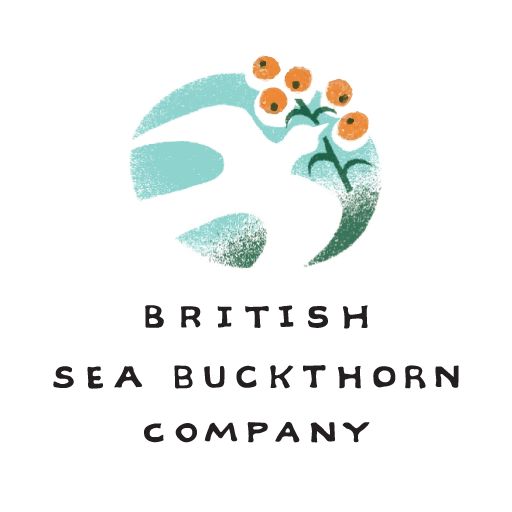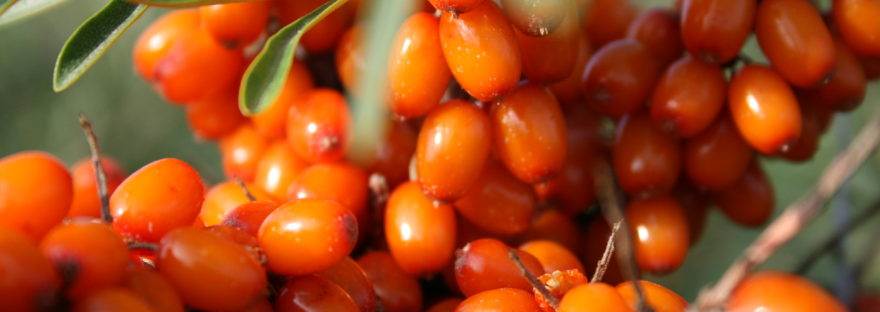2006 sounds a long time ago but this was the starting point for the concept of growing sea buckthorn at Devereux farm. The idea generated from a meeting at the World Crop Centre, based at that time at Writtle Agricultural College. Sea buckthorn appeared from an assessment of crops that might be viable as alternatives to the commodity crops we grew – wheat, barley, and rape. The choice was made quite simple as the assessment flagged up the wide market interest in sea buckthorn. It could be used in food, drinks, natural cosmetics, pharmaceuticals and animal supplements. So the decision was made based on potential market diversity. This feels particularly relevant as we finally approach our first commercial harvest in July. 13 years is a long time to incubate a project and potentially we are now starting the most crucial part of the project.
With a crop in the orchard the first challenge comes with harvesting technique. Hand picking proved to be slow and uneconomical which is why we decided to adopt the German harvesting concept of branch cutting. We have since invested in a cold store in which to freeze the branches and commissioned the design/build of a berry separation and grading machine. As two separate machines, it is then planned to see how this prototype system works over harvest and upgrade the system into a single machine in 2020. Branch cutting has been developed using German varieties, with some innovative work also in Latvia. It is untried with Siberian. Branch cutting requires the plants to regenerate new branches. We will be looking for plants to produce berry bearing branches on a three or four year cycle. This means either cutting whole plants or cutting a third/quarter of the plantation every three or four years. Alternatively we only cut a third or quarter of each plant each year.
The secondary issue is that our ten Siberian varieties may react differently to being cut at harvest time. The system is a form of pruning but one normally prunes in winter when the plants are dormant. Summer pruning leaves plants open to disease. What we need is to encourage rapid regrowth. So our cutting procedure this harvest needs to trial different approaches with different varieties and then monitor over the next three to five years which varieties react best to different cutting regimes.
It was said that it takes 20 years to establish a new crop. It is becoming clear as to the reality of this statement. Harvesting is an on-going project, the next focus is marketing. It feels really good that to promote this year’s crop we have gone back to Writtle University College to find the person who will join us to drive the marketing of the sea buckthorn crop. Launching any new product requires patience, resources, risk management and will require new skills to ensure success. If growing sea buckthorn has taken time then developing the market will as well. All products are gauged on their qualities.
Assessing quality is another area that we need to develop over this year. We know that berry quality alters as the berries ripen. Starting this year we will begin to monitor individual vitamins to start to understand this process. This will start with a single varieties this year. After harvest we will then start to analyse other berry nutrient qualities. Sea buckthorn is renowned for its nutritional quality, but each of the six species of sea buckthorn (and 12 subspecies) grow in different climates and soils creating different nutrient concentrations. Nutritional quality is not just about what phytochemicals exist in a food ingredient, but how many, what they are and how they interact to provide dietary or health benefit. The sum total of the 190 phtyochemicals in sea buckthorn berries defines what sea buckthorn is. It is a natural vitamin/nutrient supplement, and as such, that is what made it attractive back in 2006 and is how we will see it as we start to sell it this year.

